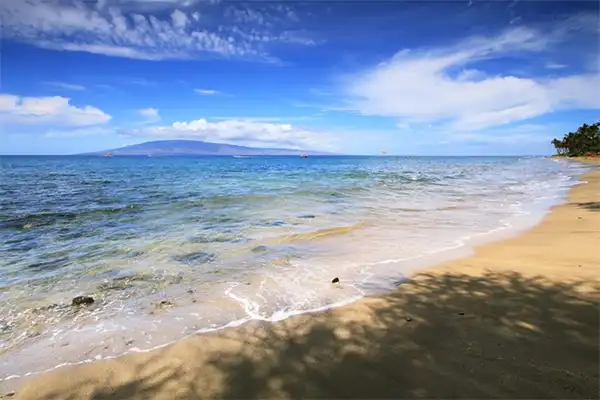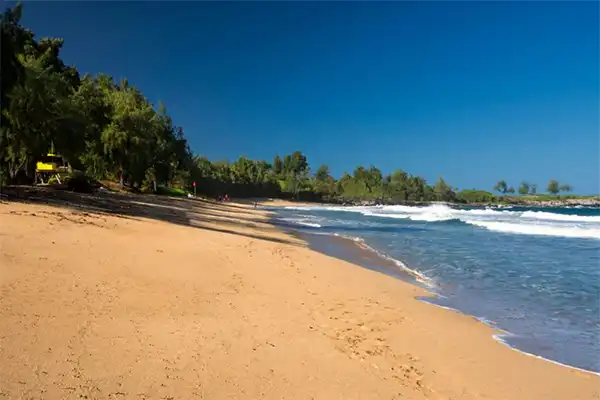D.T. Fleming beach park is popular with locals and visitors thanks to the long sands and impressive waves, as well as its location on the Kapalua Coastal Trail. But who was D.T. Fleming?
We’re sure many visitors have pondered the question, before a few minutes relaxing on the sand pushes all thoughts out of their mind.
But while D.T. Fleming is probably best immortalized in the beach park, his influence on West Maui was massive.
Known as the man who brought the pineapple to West Maui, D.T. Fleming played a key role in transforming the landscape. Learn more here.

Who Was D.T. Fleming?
Table of Contents
David Thomas Fleming, better immortalized as D.T. Fleming, was a ranch and plantation operator who lived and worked in West Maui.
For many visitors and residents of Maui, the name recalls the eponymous beach and park in Kapalua. But while D.T. Fleming Beach is well-known, the man behind it has largely fallen out of public knowledge.
Born in Scotland in 1881, D.T. Fleming and his family moved to Maui in 1889 when his father became the manager of the Grove Ranch in Hamakuapoko. D.T. Fleming spent some time away from Maui for education, before returning to Maui and working on the construction of the East Maui Irrigation.
He oversaw the planting of Norfolk pine trees in Haiku, encouraging his passion for botany.
Over the years, D.T. Fleming was made the manager of the Grove Ranch, and later the Honolua Ranch near Kapalua.
Under his management, the ranch gradually transformed into a plantation, with 40 acres of pineapples planted in the lush lands of West Maui. D.T. Fleming is credited with introducing the pineapple to West Maui, and he eventually became the manager of Baldwin Packers.
Related to his love of botany, D.T. Fleming sat on several boards dedicated to parks and agriculture.
He also created his own arboretum, known as the Maunalei Arboretum, which can still be visited in West Maui. D.T. Fleming died in 1955, and is buried at the Makawao Cemetery.
Why Is It Called D.T. Fleming Park And Beach?
Fleming Beach and D.T. Fleming Park can be found in Kapalua, on West Maui. They were named in honor of D.T. Fleming, a man who transformed the Kapalua area with the introduction of the pineapple, encouraging the shift away from ranching.
The influence of D.T. Fleming can be seen in several of the names of Kapalua landmarks. The famous Plantation golf course is named for the pineapple plantation that Fleming established, and Slaughterhouse Beach takes its name from the Honolua Ranch tannery that used to be in the area.
Many of the streets and roads around Kapalua take their name from the former plantations. And if you go walking in the West Maui mountains, you can still spot pineapples growing in places!
These leftover plants have managed to survive the changes of the last few decades. Head down to Lahaina, and you can find Fleming Road, which possibly takes the name from D.T. or his family.
D.T. Fleming had a great interest in nature and the Hawaiian landscape. He planted foreign trees on Maui to experiment with the landscape, and kept detailed records of his results.
Perhaps the park was named after Fleming, to recognize his interest in natural Maui?

Visiting D.T. Fleming Beach
D.T. Fleming beach has managed to partially eclipse the legacy of its namesake, mostly thanks to the incredible natural landscape.
D.T. Fleming beach park is known for being a chilled out sandy beach with space to sit and shade beneath the ironwood trees.
A great place for a picnic and a quick swim in summer, the beach is known for producing decent waves over winter.
Strong winds create some powerful breaks, which boogie boarders and surfers can enjoy. But keep an eye on the conditions, as they can turn dangerous in no time at all.
To access D.T. Fleming beach park, take the Honoapiilani Highway north from Kapalua. Follow the road until it intersects with Lower Honoapiilani Road, and turn.
There’s a large parking lot, which can get full on the weekends. D.T. Fleming Beach Park has a public restroom, including showers, as well as picnic benches.
D.T. Fleming Beach also forms one of the end points of the Kapalua Coastal Trail. This starts at Kapalua Beach, and passes across the natural landmarks of Kapalua.
Visiting Maunalei Arboretum
Whilst living on Maui, D.T. Fleming experimented with planting trees from around the world. This came to be Maunalei arboretum, which can still be visited in West Maui.
Fittingly, the starting point for the trail is found at D.T. Fleming Beach Park. Interested visitors will need to follow the Mahana Ridge Trail into the mountains, before joining the Maunalei arboretum trail.
The hike to the arboretum can be hard work. The Mahana Ridge Trail is steep in places, and the terrain is rough.
And when you’ve reached the end, you have to follow the same path back. We recommend taking lots of water and snacks, as the entire trail can take upwards of 5 hours.
D.T. Fleming also planted the Fleming Arboretum, which can be found in the Pu’u mahoe cinder cone on the slopes of Haleakala.
This was planted to preserve the natural trees of Maui, and can be viewed from some helicopter tours.
Final Thoughts
Credited as the man who first introduced the pineapple to West Maui, D.T. Fleming played a key role in the development of Kapalua.
Changing the farmland from ranches to pineapple plantations, his influence can still be seen across West Maui.
As can his name, which has been immortalized in D.T. Fleming beach park! A popular beach that attracts surfers and sunbathers, Fleming beach is probably the best known result of the man’s legacy.
Although for hiking fans, the Maunalei arboretum is worth a look.
